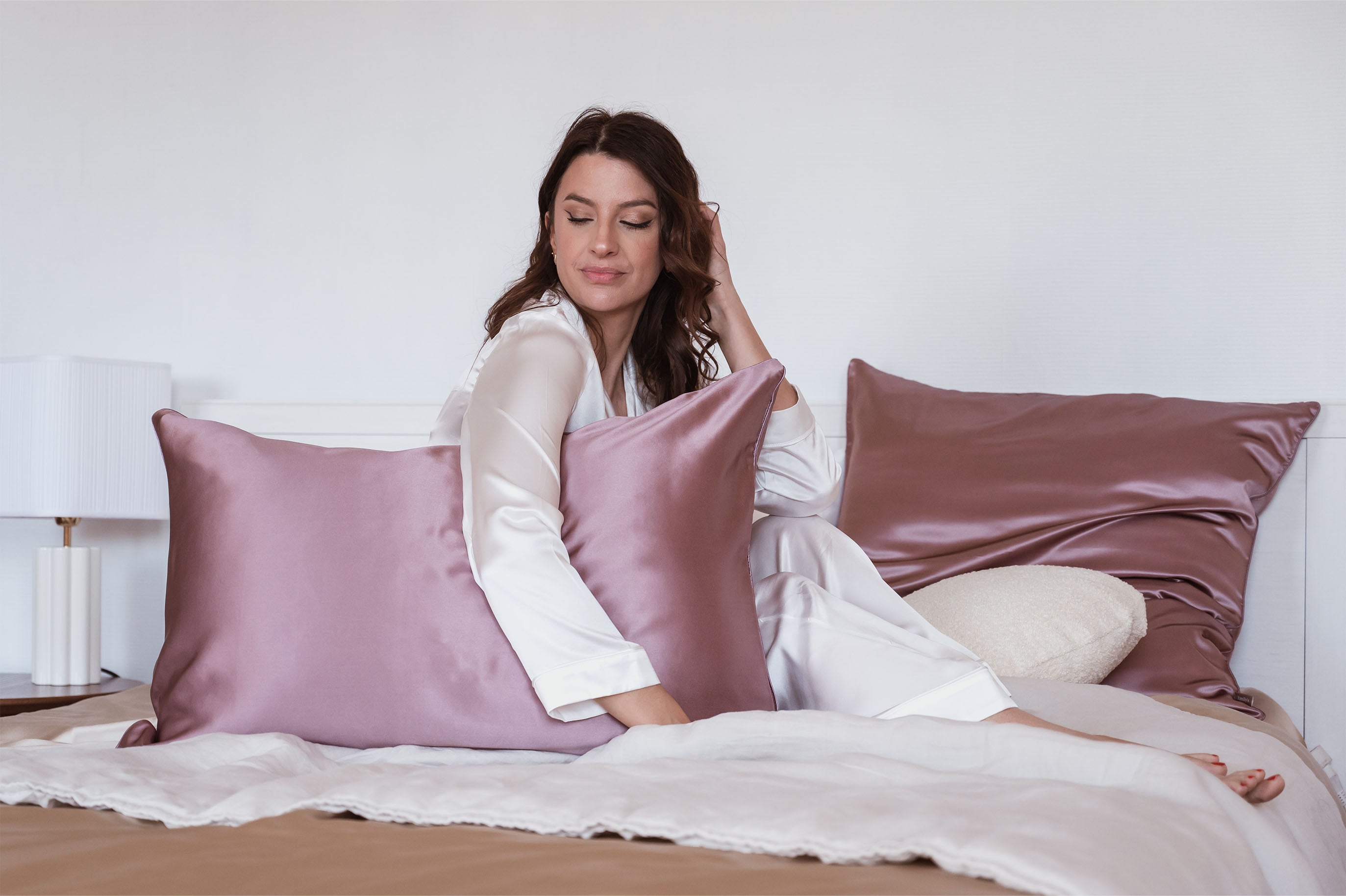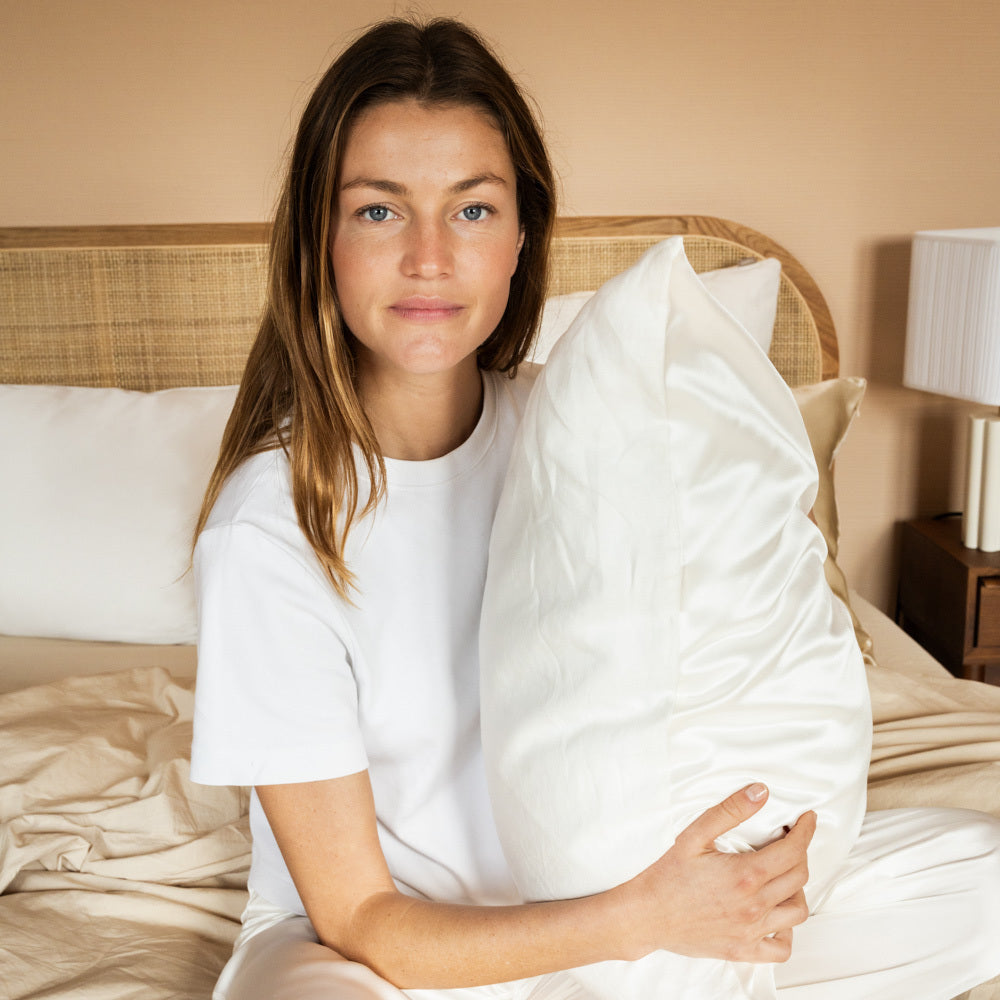
5 novembre 2024
Quelle est la différence entre la taie d'oreiller en soie et la taie d'oreiller en coton ?
Comme la plupart des gens, vous avez probablement utilisé des taies d’oreiller en coton durant votre enfance.
Si vous lisez cet article, c'est que vous êtes à la recherche d'alternatives, notamment la taie d'oreiller en soie.
À travers ce blog, explorons ensemble quelle option est la meilleure entre la taie d'oreiller en soie et celle en coton, tant pour le soin de votre peau que pour la santé de vos cheveux.
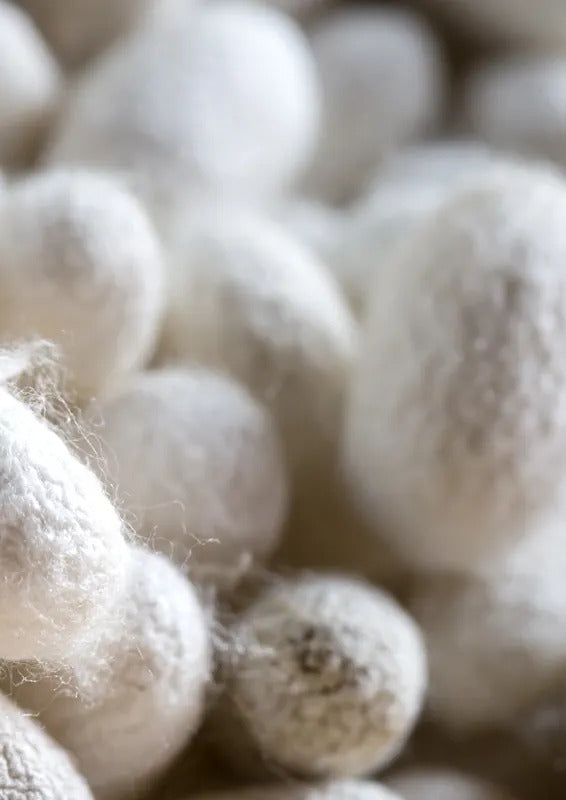
1 - Parlons de la provenance de ses matières
Parlons du coton
Le coton est une matière végétale provenant du cocon de la plante Gossypium.
Douce et duveteuse au toucher, la fibre de coton est largement utilisée et facilement disponible à travers le monde.
Selon les historiens, la culture du coton remonte à environ 7 000 ans en Amérique et en Asie centrale.
De plus, il est intéressant de noter que les Égyptiens cultivaient déjà un coton de grande qualité il y a 3 000 ans.
Aujourd'hui, les principaux producteurs de fibre de coton sont l'Inde, les États-Unis et le Pakistan.
Quel est le processus pour obtenir un tissu de coton de qualité, par exemple pour confectionner une taie d’oreiller ?
Après la récolte des capsules de coton à l'automne, les fibres sont soigneusement séparées des graines et des débris qui pourraient s'y être accrochés.
Ensuite, la filature intervient pour transformer ces fibres en fils de couture ou en tissus. Une fois ces étapes achevées, le coton peut être utilisé pour créer une large gamme de produits, tels que des vêtements, des serviettes, des draps, des couvertures, des nappes, et bien d'autres encore.
Et la soie dans tout ça ?
La soie de mûrier est également une fibre naturelle. Mais celle-ci n’est pas issue d'une plante comme la fibre de coton. La soie est issue des chenilles du papillon appelé Bombyx du mûrier. Les chenilles façonnent les fils de soie dans leur chrysalide avant de devenir des papillons.
La culture de la soie est connue depuis 5000 ans, un peu moins longtemps que celle du coton. La production de soie a débuté en Chine qui est encore un des plus gros producteurs de soie de qualité supérieure au monde.
La soie est une matière haut de gamme et rare, car la confection de sa fibre est issue d’un processus plus complexe que celui du coton.
Pour produire de la soie, les chenilles de papillons sont élevées dans les arbres de mûrier, où elles sont nourries avec des feuilles de mûrier, qui constituent leur unique source de nourriture. Une fois que les chenilles ont tissé leurs cocons, ces derniers sont récoltés et bouillis afin de ne pas abîmer la fibre de soie. Les fils de soie sont ensuite déroulés, lavés et traités pour éliminer les impuretés et les nœuds avant d'être filés en fils continus qui peuvent être tissés en tissus de soie.
Donc les deux fibres sont issues des matières naturelles. Le coton est une matière plus répandue et commune. Alors que la soie est une matière précieuse et rare.
Comparons à présent les effets de la soie et du coton sur la peau.
Car oui, la taie d’oreiller est en contact avec votre peau pendant toute la nuit. Ce qui représente 8 à 7 h par jour. La matière affecte donc votre peau et son éclat.
2 - Effets sur la peau
Commençons par la taie d’oreiller en coton
Le coton a des effets absorbants en effet, il permet d'absorber votre excédent de sébum ou d’humidité par exemple. Qui peut être utile si vous possédez une peau à tendance grasse. Mais au contraire, si vous avez une peau à tendance mixte ou sèche, le coton peut irriter votre peau, voir entraîner une sécheresse cutanée. On peut également noter que la capacité de rétention d’humidité de la taie d’oreiller en coton peut entraîner une prolifération de bactérie non négligeable ainsi qu’une prolifération d'acariens.
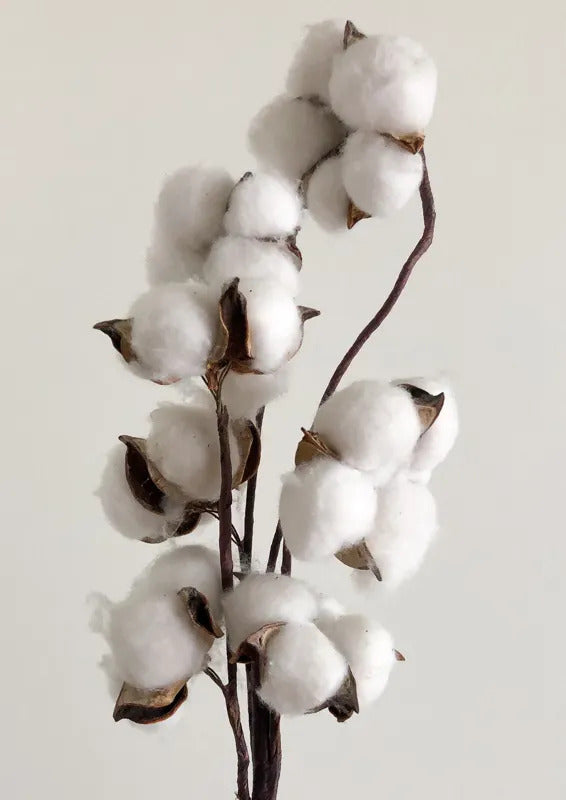
La taie d'oreiller en coton doit impérativement être lavée une à deux fois par semaine, pour éviter ce problème.
L'habileté d'absorption du coton a de plus pour conséquence d'éponger les produits de soins que vous pouvez vous mettre sur la peau avant de dormir. Par exemple, votre crème de nuit, la taie d’oreiller en coton va considérablement réduire son efficacité.
Le coton est une matière agréable, mais n’est pas extrêmement doux. C'est-à-dire que les différentes frictions qu’engendre le coton au contact de la peau toute une nuit. Ces frictions créent de micro liaisons sur la peau et favorisent l'apparition de l’acné.
La taie d’oreiller en soie et ses effets sur la peau
La soie est une matière naturelle très douce. Contrairement au coton, la soie est connue pour sa douceur extrême. Les frictions sont donc presque inexistantes. La taie d’oreiller en soie ne cause ainsi pas de micro liaison sur la peau pendant la nuit.
En conséquence, votre pause est douce au réveil grâce à la protection qu'offre la taie d’oreiller en soie toute la nuit.
La soie a pour particularité d’être hydrophobe contrairement au coton qui est une matière absorbante. Ce qui permet de ne pas éponger les produits que vous pouvez mettre sur votre peau et d’optimiser leur efficacité. De plus, il est important de souligner que la soie est une fibre naturelle qui possède plusieurs protéines, bienfaitrices pour la peau. Elles sont particulièrement reconnues pour leurs propriétés cicatrisantes et régénérantes.
La soie a des propriétés antimicrobiennes naturelles qui aident à tuer les bactéries qui causent l'acné et à prévenir les infections cutanées.
De plus, la soie a également des propriétés antifongiques, ce qui peut être bénéfique pour les personnes souffrant d'acné causée par des levures.
3 - Les effets sur les cheveux
Les effets que la taie en coton peut avoir sur les cheveux.
Comme nous l'avons dit précédemment pour les effets sur la peau. Le coton est un tissu absorbant, ce qui signifie qu'il peut absorber l'humidité de vos cheveux, laissant vos cheveux secs et cassants, ce qui a pour conséquence de causer des frisottis et des dommages aux cheveux.
Le coton est une matière qui manque de glissement contrairement à la soie qui a une texture lisse, le coton a tendance à accrocher les cheveux, ce qui peut causer des dommages aux cheveux. Ce qui peut entraîner des frottements, en effet le coton est un tissu rugueux et peut causer des frictions avec vos cheveux pendant la nuit, ce qui forme durant la nuit des nœuds et rend les cheveux plus cassants et fourchus.
Parlons à présent de la soie
La surface lisse de la soie peut aider à réduire les frisottis et les nœuds dans les cheveux, ce qui peut prévenir les cassures et les dommages capillaires.
La soie est douce et glissante contrairement au coton, ce qui réduit la friction avec les cheveux. Cela peut aider à prévenir la casse des cheveux et les pointes fourchues.
L’avantage majeur de dormir sur une taie d'oreiller en soie permet de préserver les coiffures, car les cheveux glissent sur la surface lisse de la taie plutôt que de frotter contre le tissu rugueux qui peut défaire les boucles et les ondulations.
La soie est vraiment un allié pour vos cheveux, il n’y a que des avantages à préférer une taie d’oreiller en soie
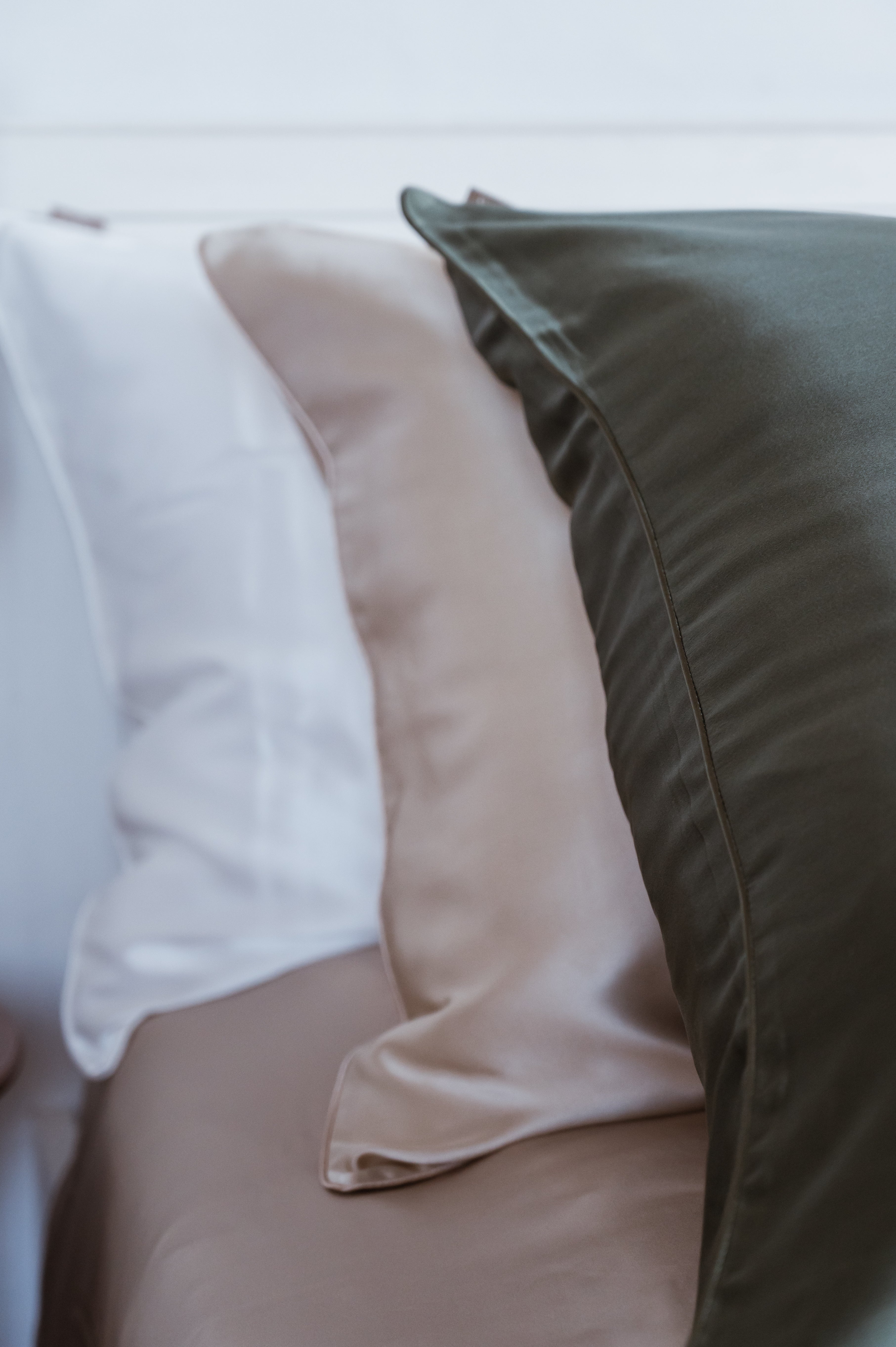
4 - La praticité des deux matières
Les taies d'oreiller en cotons sont faciles à entretenir et à nettoyer, car elles peuvent être lavées à la machine à l'eau chaude avec des détergents standard. Et les taies d’oreiller en coton sont également souvent plus abordables que les taies d'oreiller en soie, ce qui les rend plus accessibles.
La taie d’oreiller en soie, est plus fragile qu'une taie d’oreiller en coton. On doit y prendre le plus grand soin. Tout d'abord, la taie d’oreiller en soie doit être lavée à l'envers pour ne pas abîmer sa douceur. De plus, il faut la laver à la machine à laver sur le mode le plus doux. Ou alors à la main pour les plus courageux. La taie d’oreiller en soie est aussi plus chère qu'une taie classique en coton.
Mais cela est justifié parce que la soie est une matière noble avec de nombreuses qualités.
Pour terminer
Vous avez pu remarquer que dormir sur une taie d’oreiller en soie a beaucoup plus d’avantages que de dormir sur une taie d’oreiller en coton. Tout d’abord pour la peau, mais également pour les cheveux.
Mais nous pouvons aussi souligner que la taie d’oreiller en soie est un investissement qui va permettre à son utilisateur de profiter de ses bienfaits pendant la nuit.
Vous ne serez pas déçu, je vous l’assure. Dites au revoir à votre taie d’oreiller en coton.
